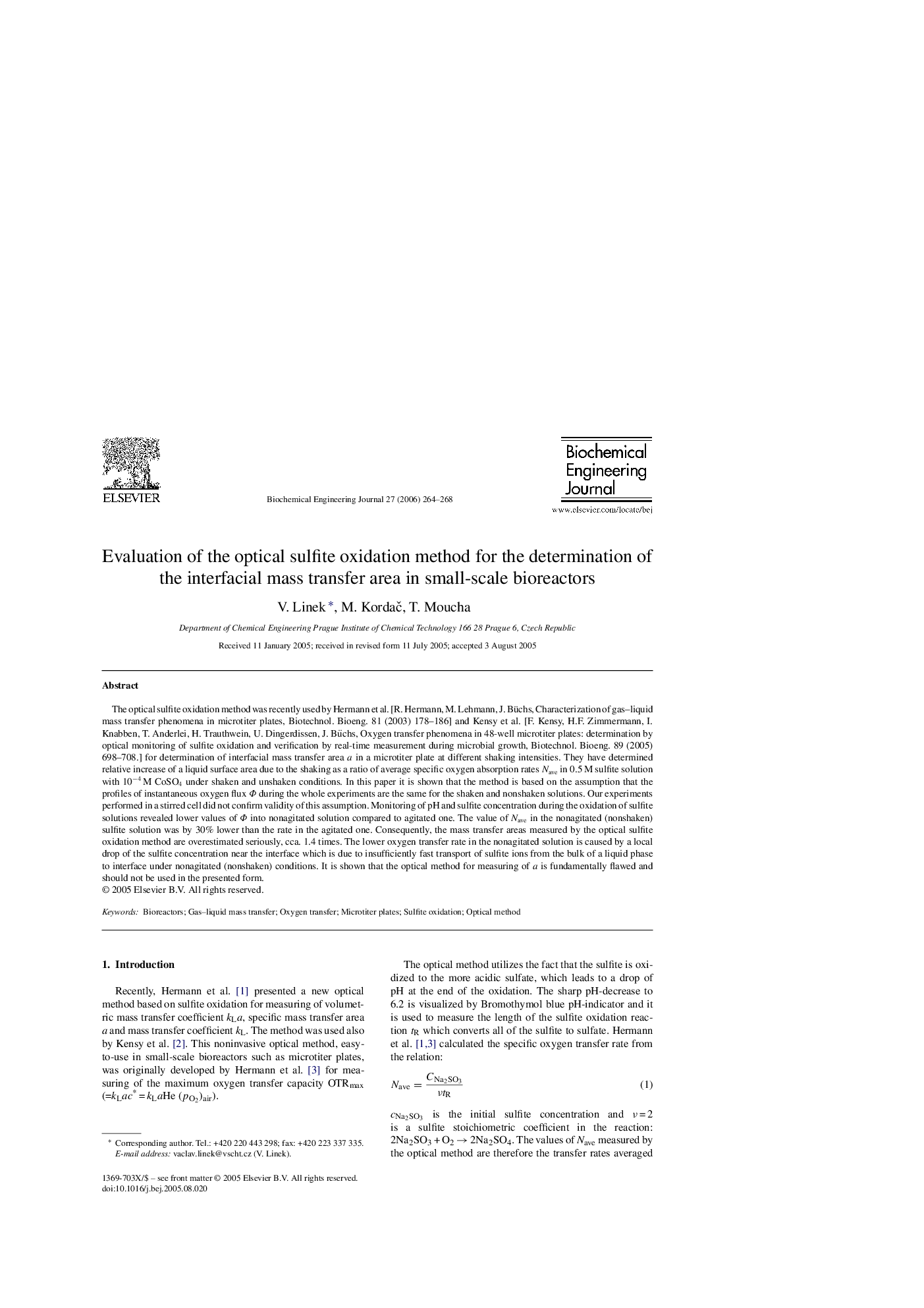| Article ID | Journal | Published Year | Pages | File Type |
|---|---|---|---|---|
| 5083 | Biochemical Engineering Journal | 2006 | 5 Pages |
The optical sulfite oxidation method was recently used by Hermann et al. [R. Hermann, M. Lehmann, J. Büchs, Characterization of gas–liquid mass transfer phenomena in microtiter plates, Biotechnol. Bioeng. 81 (2003) 178–186] and Kensy et al. [F. Kensy, H.F. Zimmermann, I. Knabben, T. Anderlei, H. Trauthwein, U. Dingerdissen, J. Büchs, Oxygen transfer phenomena in 48-well microtiter plates: determination by optical monitoring of sulfite oxidation and verification by real-time measurement during microbial growth, Biotechnol. Bioeng. 89 (2005) 698–708.] for determination of interfacial mass transfer area a in a microtiter plate at different shaking intensities. They have determined relative increase of a liquid surface area due to the shaking as a ratio of average specific oxygen absorption rates Nave in 0.5 M sulfite solution with 10−4 M CoSO4 under shaken and unshaken conditions. In this paper it is shown that the method is based on the assumption that the profiles of instantaneous oxygen flux Φ during the whole experiments are the same for the shaken and nonshaken solutions. Our experiments performed in a stirred cell did not confirm validity of this assumption. Monitoring of pH and sulfite concentration during the oxidation of sulfite solutions revealed lower values of Φ into nonagitated solution compared to agitated one. The value of Nave in the nonagitated (nonshaken) sulfite solution was by 30% lower than the rate in the agitated one. Consequently, the mass transfer areas measured by the optical sulfite oxidation method are overestimated seriously, cca. 1.4 times. The lower oxygen transfer rate in the nonagitated solution is caused by a local drop of the sulfite concentration near the interface which is due to insufficiently fast transport of sulfite ions from the bulk of a liquid phase to interface under nonagitated (nonshaken) conditions. It is shown that the optical method for measuring of a is fundamentally flawed and should not be used in the presented form.
